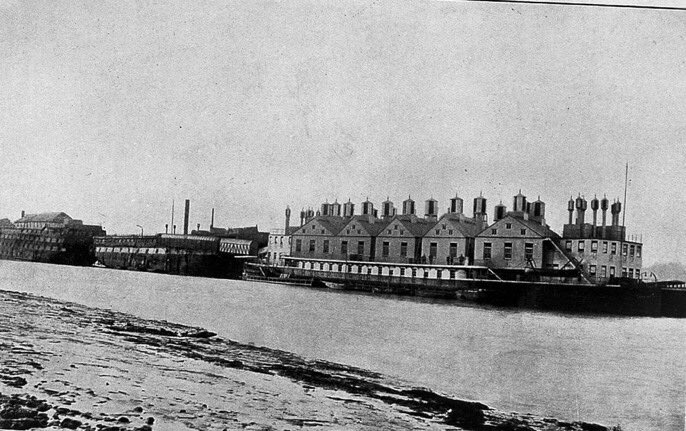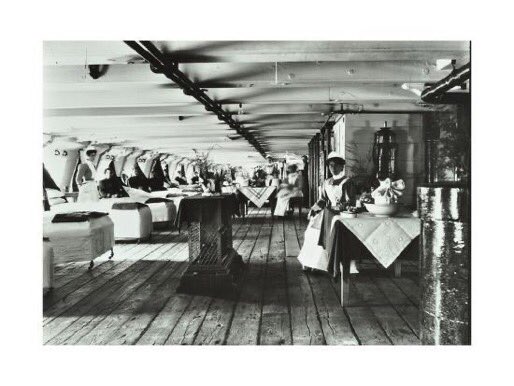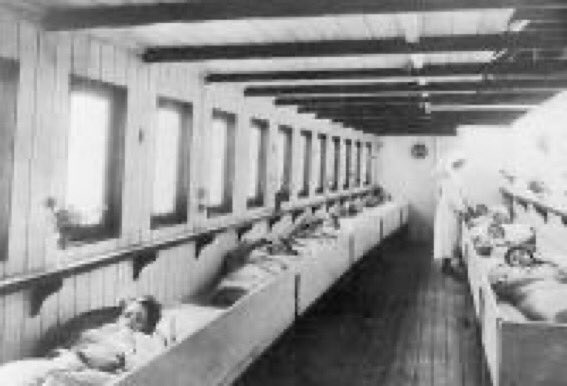London has often faced the terrible challenge of disease outbreaks. The smallpox epidemic in 1881 led to a desperate shortage of hospital beds. London’s Metropolitan Asylums Board (MAB) considered housing these patients on isolated floating hospitals on the Thames. (1/4)
MAB chartered two old wooden warships from the Admiralty; the Atlas, a 91-gun man-of war built in 1860, was for acute cases, and the Endymion, a 50-gun frigate as an administrative block.
By the end of the outbreak in Aug 1882, almost 1,000 smallpox patients had been treated aboard the Atlas. 120 had died.
A third ship, the Castalia was fitted out as a smallpox hospital and joined the other two at Long Reach, 17 miles from London Bridge. 150 Female patients were kept on this ship.
Men were treated on board the Atlas were treated. The ship also had a chapel on deck and chaplain. Initially heated by steam pipes, the Atlas had electricity installed in 1896 to reduce fire risk and a galley way connected the three ships.
Between 1881 and 1902 many of the identified acute smallpox patients living in London were transported to these three ships to be cared for. A matron and other staff lived on board the Endymion.
For the next two decades until 1903 smallpox patients were taken from MAB wharves at Rotherhithe, Blackwall & Fulham to hospital ships. A medical officer triaged the cases at the wharf and confirmed cases were taken by steam ambulance boats to the Long Reach floating hospitals.
And today mudlarkers like Nicola find Metropolitan River Ambulance Service badges in the Thames - a vestige of London’s response to the smallpox epidemic of the 1880’s. https://twitter.com/tidelineart/status/1246750365661437952">https://twitter.com/tidelinea...

 Read on Twitter
Read on Twitter











